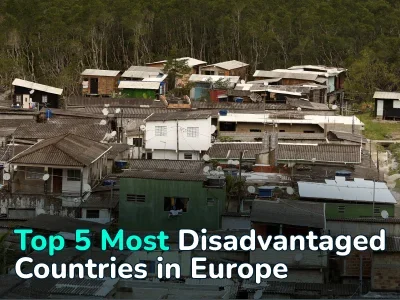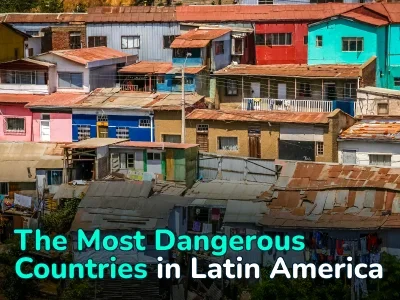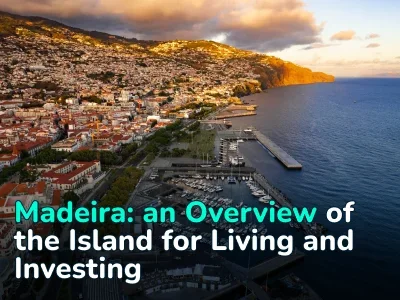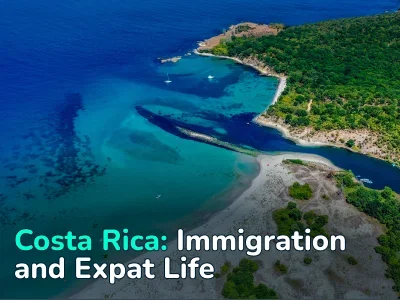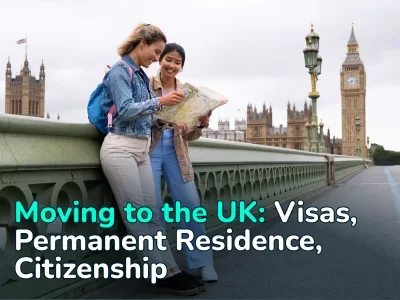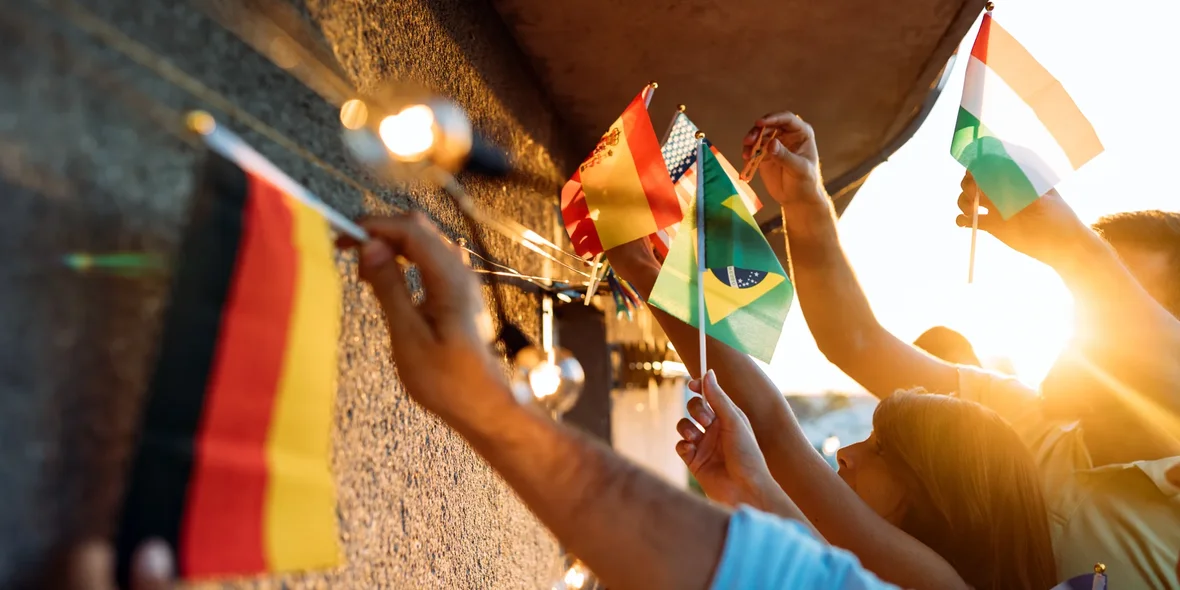
The Safest Countries to Live in 2025
Against the backdrop of global instability, the overall level of peace is declining. This is not an abstract phenomenon but a measurable indicator that is regularly assessed. At present, global peacefulness has dropped again, showing the worst results in 17 years of monitoring. This decline is largely due to the fact that there are currently 59 active state-level conflicts worldwide, the highest number since World War II.
As a result, in 2025, personal safety has become a practical matter, and people are increasingly determined to relocate to safer countries. We identified which nations rank among the top ten safest and why they hold such high positions.
Read also which European cities have the highest crime rates.
Top 10 Safest Countries to Live in 2025
To compile this ranking, we used data from the Global Peace Index (GPI), developed by the Institute for Economics and Peace. The index evaluates countries based on violent crime rates, political stability, militarization, and social safety. As supplementary data, we also relied on figures from the crowdsourced platform Numbeo.
Iceland
Iceland is considered the most peaceful country in the world and has held the top spot in the Global Peace Index since 2008. The island is home to about 389,400 people, with no megacities; the only major urban center is the capital, Reykjavík. This structure significantly reduces street crime (fewer large agglomerations and areas with high anonymity), while the police and social services can physically cover the territory more effectively.
The country has no armed forces in the conventional sense; Iceland is the only NATO member without a standing army. This makes it one of the least militarized nations in the safety rankings.
However, Iceland also has its downsides. Its cost of living index is 94.5 points, higher than that of neighboring Northern European countries: Norway (78.9) and Denmark (74.1) — though still lower than Switzerland (106.8). Housing is the biggest burden on the budget: as of July 2025, the average price per square meter in Reykjavík is about €5,175. Regulators and professional associations highlight serious issues of housing affordability, as price growth in recent years has outpaced income growth.
Climate is another real factor that does not play in Iceland’s favor. Reykjavík is among the windiest capital cities in Europe: in January, the average hourly wind speed is 25.6 km/h, with peak values reaching up to 74.2 m/s. By comparison, typical wind speeds range between 12–19 km/h.
Finally, the island is of volcanic origin and prone to eruptions and earthquakes. Since 2021, the Reykjanes Peninsula has entered a new active phase; on July 16, 2025, another eruption of the Sundhnúkur volcano was recorded.
Ireland
Ireland ranks second thanks to its long-standing policy of neutrality: the country is outside military alliances and consistently adheres to a course of non-participation in collective defense agreements.
In terms of street safety, Ireland holds a middle position with a score of 50 out of 100. This is lower than its northern neighbors, such as Finland (~73.5) and Denmark (~74.0), and is explained largely by the structure of everyday crime. Major cities see more thefts, car break-ins, and minor violations compared to Scandinavia, although the rate of serious crimes is roughly the same.
The cost of living index in Ireland is 66.6, which is higher than the United Kingdom (64.2) and comparable to Germany (64.7) and Finland (64.5). For those looking to rent, the main stress factor is housing costs: in Dublin, monthly rents range from €1000 to €3000.
New Zealand
Although New Zealand is located in the Asia-Pacific region, it holds safety rankings on par with many European countries. Everyday perceptions of safety are average for Western nations, at around 51.5 out of 100. At the same time, serious crimes remain relatively rare.
A major factor that improved security was the ban on the sale of automatic and semi-automatic firearms in 2020. Moreover, Parliament introduced mandatory gun licensing and required all firearm owners to be registered.
Living costs are lower than in Australia but higher than in Southern Europe, with average monthly rents at about USD $632. However, a significant downside is seismic activity: New Zealand lies on a tectonic plate boundary, experiencing around 20,000 earthquakes annually, 100–150 of which are strong enough to be felt.
Austria
Austria has been a constitutionally neutral country since 1955, remaining outside NATO and avoiding overseas military engagements. This reduces militarization and ensures that Austrian citizens are not subject to mobilization for foreign conflicts. The country does maintain armed forces, but they are focused on territorial defense and assisting civil authorities in emergencies.
In everyday life, Austria is considered safe. While its safety rankings are slightly below the EU average, the incidence of serious crimes remains low at about 0.7 cases per 100,000 inhabitants. The cost of living is not the cheapest, but it is only marginally higher than in Germany or Ireland.
Switzerland
Switzerland shares 4th place with Austria. This position reflects the classic «Swiss formula»: diplomatic neutrality as a state doctrine, minimal involvement in external conflicts, and an exceptionally low level of violent crime.
Institutions function with clockwork precision. Switzerland maintains a high level of corruption control, transparent administrative procedures, and minimal friction in both daily life and business. The trade-off, however, is cost: Switzerland ranks as the second most expensive country in the world in terms of cost of living.
Singapore
Singapore is the only Asian country to appear in the Global Peace Index’s top ten. Several factors explain this. First, it is a city-state rather than a large country, and unlike Iceland, its population density is extremely high, about 8230 people per square kilometer. This allows for a correspondingly large number of law enforcement officers who cover the entire territory. As a result, crime rates are comparable to those of the world’s safest cities.
The cost of this security is high living expenses. Once again, housing is the dominant burden: renting a small room costs between USD $500 and SGD $1500 per month, with higher-end options reaching SGD $4000. Purchasing a home starts at around USD $360,000, putting ownership out of reach for many.
Portugal
Portugal continues to improve its law enforcement system. Its street safety index is above the EU average but lower than that of Scandinavian countries. The most common violations are not violent crimes but petty theft in tourist-heavy areas — such as pickpocketing and bag snatching.
What sets Portugal apart from the top-ranked countries is its relatively affordable prices. The cost of living index stands at 45.8, significantly lower than Denmark’s 74.1 and far below Switzerland’s 106.8.
Denmark
Denmark consistently ranks among the world’s top ten most peaceful countries. Local institutions are considered free of corruption at the municipal level, a fact confirmed by Denmark’s first-place position in the global corruption perception rankings.
Safety is also high, but there is one nuance that Danes themselves point out. While overall crime levels are low, petty property crimes in the capital region are breaking records. These are primarily bicycle thefts and shoplifting. Although such offenses may sound minor, the scale has grown to the point that in 2025 the Ministry of Justice ruled that fines must always exceed the value of the stolen item.
Slovenia
Slovenia does not have any extraordinary specifics, but it meets the standard criteria for safe living: it is a small country with effective law enforcement coverage and a stable political system. In terms of corruption perception, Slovenia is a solid middle performer, ranked 36th out of 180 countries.
The country is relatively affordable to live in, but caution is needed when buying property, since Slovenia’s coastal regions are prone to flooding. In August 2023, the nation experienced its largest natural disaster in decades, with two-thirds of the country’s territory affected by floods.
Finland
Finland returned to the world’s top 10 most peaceful countries in 2025. Previously, it had dropped out of the list following its NATO accession and the militarization of its borders. Its return was ensured not by foreign policy shifts but by domestic improvements in public safety and crime control.
In everyday life, Finland feels comparable to Switzerland and Denmark, meaning people can comfortably walk outside at night without heightened fear. The statistics confirm this trend: serious crimes have been declining in recent years, with an academic review recording about 1.14 cases per 100,000 people in 2023.
Summary
A country’s position in the rankings should be seen as a guide, not a verdict. Different indices help to provide general orientation, but by emphasizing one factor, they inevitably overlook another. This leads to certain paradoxes: a country may be very safe overall, yet specific cities can have crime rates that are disproportionately high and vice versa.
In general, rankings are highly abstract. For example, Numbeo relies on data that anyone can submit to the platform. The World Happiness Report is even more subjective, being based entirely on how respondents perceive their own well-being.
In fact, the variation of real figures within a single capital city can sometimes be greater than the gap between two neighboring countries in the rankings. That is why your truly safe spot is more likely to be found not in an entire country, but in a particular city or even a specific neighborhood.
Frequently Asked Questions About the Safest Countries to Live in
Which is the safest country to live in 2025?
According to the Global Peace Index 2025, Iceland remains the safest country in the world. It has topped the ranking every year since 2008 due to its low crime rate and absence of a standing army.
What are the top 10 safest countries in the world in 2025?
The list includes Iceland, Ireland, New Zealand, Austria, Switzerland, Singapore, Portugal, Denmark, Slovenia, and Finland.
How is the Global Peace Index calculated?
The Global Peace Index evaluates countries based on violent crime rates, political stability, militarization levels, and social safety indicators.
Which are the safest European countries to relocate to in 2025?
Among the safest options in Europe are Iceland, Austria, Switzerland, Portugal, Denmark, and Finland. All combine low crime rates with strong institutions.
Are there affordable safe countries to live in?
Yes, Portugal and Slovenia are considered both safe and relatively affordable compared to Switzerland, Iceland, or Denmark, which have very high living costs.
Author
I write informative articles about real estate, investments, job opportunities, taxes, etc.









